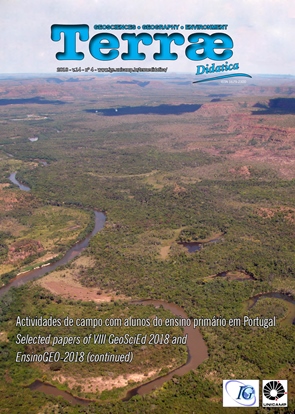Resumen
Research has shown that students have difficulties in understanding topographic maps and landforms associated with contour patterns and therefore have problems in reading and interpreting topographic maps and relating these 2-dimensional representa-tions to a real 3-dimensional environment. However, maps are a fundamental tool for understanding geographical concepts and solving geographical problems. Current research indicates that this is not uniquely a South African problem and various at-tempts have been made to address this problem such as the use of videos, models and fieldtrips – each with their own limita-tions and difficulties. Nevertheless, the ability to visualize in 3-dimensions from a 2-dimensional representation is an essential skill in understanding and interpreting topographical maps. To address the problem of 3-D visualisation, an augmented reality sandbox (AR-Sandbox) was introduced to a Geography classroom, to Grade 11 students at a Secondary school in Johannes-burg, South Africa. The aim of this study is to determine the effectiveness of using the AR-Sandbox to enhance the learning of – and improve the learner's performance – in mapwork, and thereby address the problems experienced with 3-D visualisation. The results of the pre-test and post-intervention test are presented and show that the AR-Sandbox is an effective tool for en-hancing an understanding of landscapes rather an improving performance in the construction of cross-sectional profiles.Citas
Apostoloulou E.P., Klonari A. 2011. Children’s map reading abilities in relation to distance perception, travel time and landscape. European Journal of Geography, 2:35-47.
Batyi K.R. 2011. The integration of mapwork and environmental issues using local context in FET geography: An investigation of current pedagogic practices to inform professional development. Rhodes University, South Africa. [Unpubl. MEd (Environmental Education) Dissert.].
Carter G., Cook M., Park J.C., Wiebe E.N., Butler S.M. 2008. Middle grade students’ interpretation of contour maps. School Science and Mathematics, 108:71-79.
Carrera C.C., Avarvarei B.V., Chelariu E. L., Draghia L., Avarvarei S.C. 2017. Map-Reading skill development with 3D technologies. J. Geography, 116:197-205.
Calderone G.J., Thompson J.R., Johnson W.M., Kadel S.D., Neson P.J., Hall-Wallace M., Butler R.F. 2003. GeoScape: An instructional rock garden for inquiry-based co-operative learning exercises in Introductory Geology courses. J. Geosc. Educ., 51(2):171-176. Drennan G.R., Evans M.Y. 2011. Introductory Geological Mapwork. An active learning classroom. J. Geosc. Educ., 9(2):56-62.
Ezeudu S.A., Utazi O.L. 2014. Competency Gaps among Geography Teachers in the Teaching of Geography Mapwork in Secondary Schools in Kogi State. J. Educ. and Practice,5, No. 5: 41-48.
Gaudence O., Too J.K., Nabwire V.K. 2013. Enhancing learning of geography: a focus on video use. International J. Social Science and Education, 4:277-288.
Hsu H.P., Tsai B.W., Chen C.M. 2017. Teaching topographic map skills and geomorphology concepts with Google Earth in a one-computer classroom. J. Geography, 0:1-11.
Innes L., Willigen C.V. 2008. Preparing future spatial decision makers: using self-instruction and GIS to improve map skills in the classroom.
Larangeira R., Van der Merwe C.D. 2016. Map literacy and spatial cognition challenges for student geography teachers in South Africa. Perspectives in Education, 34:120-138.
Libarkin J.C., Brick C. 2002. Research methodologies in Science Education: Visualization and the Geosciences, J. Geosc. Educ., 50(4):449-455.
Maonga T.W. 2015. Influence of reflective inquiry-based teaching on public secondary school students’ performance in geography map work in Kenya. University of Nairobi, Kenya. (Unpubl. PhD Thesis).
Mwenesongole E. 2009. The factors influencing learners achievement in geography Mapwork at grade 12 level. The international Journal of Learning, 16:530-544.
Nystrand M., Gamoran A. 1991. Instructional discourse, student engagement and literature achievement. Research in the Teaching of English, 25:261-290.
Offermo R. 2016. Augmented reality sandbox as a tool to facilitate learning for undergraduate students in the Bachelors program of Earth Science. Independent Project at the Department of Earth Sciences, 11.
Wilmot P.D., Dube C. 2016. Opening a window onto school geography in selected in public secondary schools in the Eastern Cape Province. South African Geographical Journal, 98:337-350.
Wilmot, D. 1999. Graphicacy as a form of communication. South African Geographical Journal, 81:91-95.
A Terrae Didatica utiliza a licença do Creative Commons (CC), preservando assim, a integridade dos artigos em ambiente de acesso aberto.

